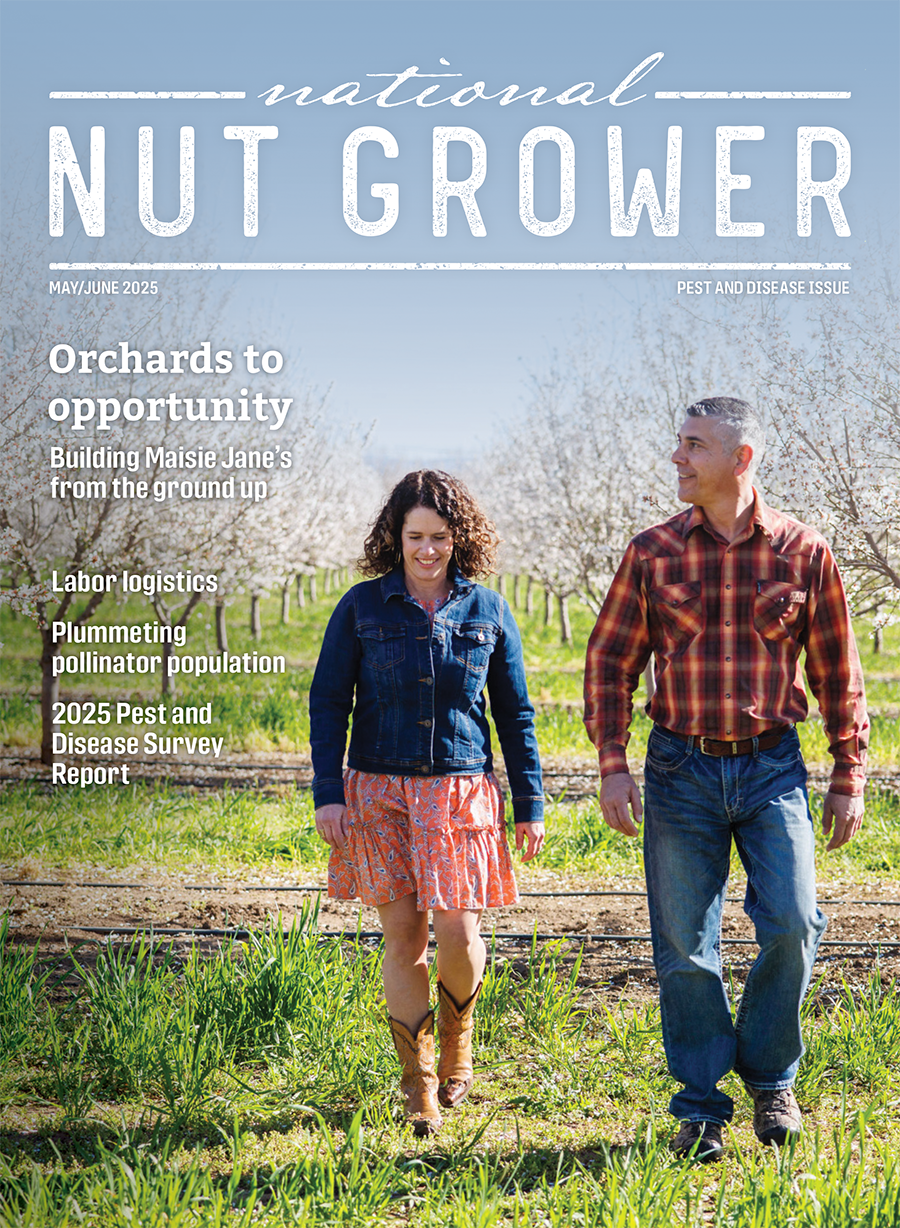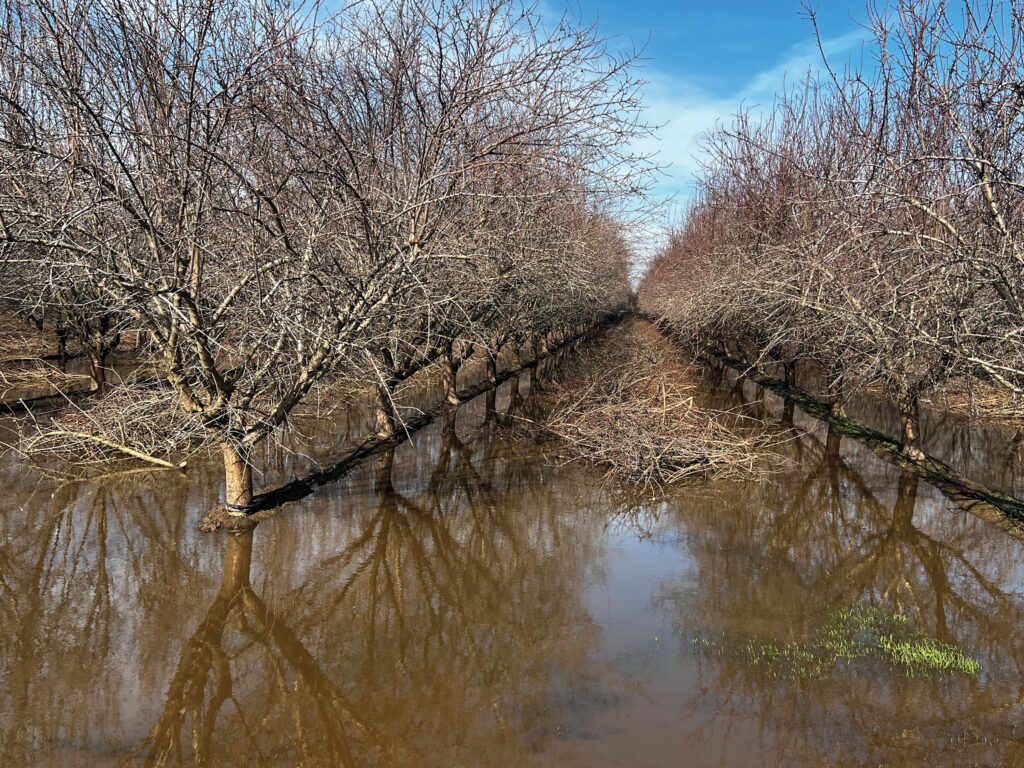
Wild weather challenges
The risk of damage from disease and pests expected, harvest impacts not yet known
The near-daily barrage of rain that struck California isn’t expected to significantly harm the state’s nut growers. The torrential downpours, however, have caused extra work for the orchardists.
From February into early April, seemingly endless rains from at least 14 “atmospheric rivers” deluged the Golden State, hitting major production regions including the San Joaquin Valley.
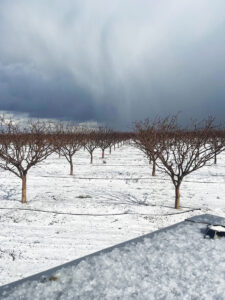
The storms replenished the drought-stricken state’s water supplies and helped growers leave a multiyear drought and water shortages. However, too much water too often caused flooding, which oversaturated fields.
At Fresno’s Maricopa Orchards, pistachios were dormant during the rains, but almonds sustained heavy rains during their bloom period, said Joe Coelho, agronomy manager. If groves remain underwater for too many days, they can develop root hypoxia, which can lead to root loss as well as an onset of disease once the trees awaken, he said.
“Depending on the stage of bloom, there could be more or less bloom, as snow is a good insulator,” said Coelho. “But, as it melts, it could pull the heat out of flowers.” Coelho believes his groves likely survived, but other growers in other parts could have experienced damage from intermittent hail that struck up and down the Central Valley.
Skipping irrigation
As Del Bosque Farms in the southern part of California’s Central Valley typically irrigates in March, the constant rains allowed it to skip some irrigation cycles, said Joe Del Bosque, CEO/operations of the Firebaugh operation which grows almonds as well as cherries and melons.
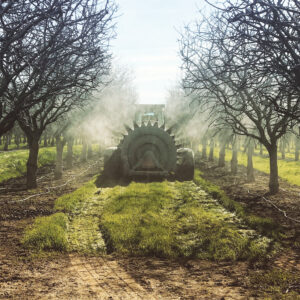
The saturation required Del Bosque to change some of its management practices. Working on highly saturated ground means it will take longer to get into the ground and deal with the higher number of weeds, which followed the rains. “As the ground is wet when it’s typically dry, we have to adjust our program to approach planting in a different way,” said Del Bosque.
Coelho expects intense river flows through the summer. “There’s going to be plenty of water to pump,” he said.
Coelho said he hadn’t seen any negative effects from saturation. In many cases, fields are at capacity and saturated, but rains are typically intermittent. The main negative of saturation is its barring growers from accessing their fields to conduct cultural practices.
While some years require only one application of fungicides to protect his blooms, this year, most growers will have made two applications. And more could become necessary if the storms continue, Del Bosque said.
Mummy time
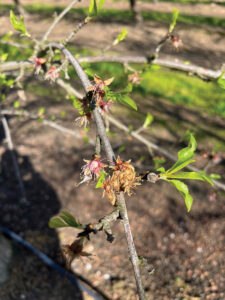
For almonds, Coelho said he expects the intermittent precipitation to result in an inability of growers to effectively sanitize almonds, meaning the removal of mummies. A dormancy practice, growers shake trees to remove mummies from their nuts that persist from the previous season and would otherwise overwinter. That should mean a high mummy count in almond orchards. While growers typically witness counts of one or less mummies, Coelho said he’s seeing trees with hundreds.
Risk of damage from navel orangeworms, a primary almond and pistachio pest, is expected to be high, said Coelho. “When trees are generally less stressed, the pests are not as attracted to the trees as they would otherwise be,” he said. Prior to the drought, ranches that historically experienced low damage from navel orangeworm saw 1% infestations. Those numbers have increased to 5%.
With the overabundance of mummies, the orangeworms will pose a challenge. With all the cold weather, Coelho said he expects growers to employ mating disruption. Because of the excessive rains, growers were required to consider extra sprays to control the navel orangeworms.
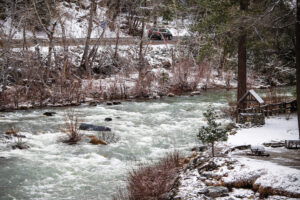
Coelho said he’s seen rust and bacterial blast, alternaria mold and other fungi, which are fairly common, even with treatment and often seen at low levels.
For Del Bosque’s almonds, the heavy rains could affect bloom and set, resulting in a reduced crop, which harms growers financially, he said.
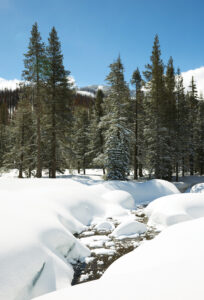
The drought relief is welcome to almond growers.
“Of course, the availability and cost of water has been a stress on almond growers, as it has been on all California farmers,” said Rick Kushman, manager of media relations and global communications for the Almond Board of California in Modesto. “That is why almond growers have worked hard on their water efficiency and have reduced the amount of water needed to grow a pound of almonds in recent years by 33% and have a goal of improving it by another 20% by 2025. We are hopeful these storms and the snowpack bring some drought relief.”
Damage estimates weren’t immediately available. Growers report it may take weeks before the full extent of damage is revealed.
Bee concerns
“We are worried that we will see a lot of Phytophthora root and crown rot this spring,” Brent A. Holtz, Ph.D., county director and farm advisor with the University of California Cooperative Extension in San Joaquin County, said. “The cold wet weather has already caused us to have more bacterial blast this spring caused by Pseudomonas syringae.”
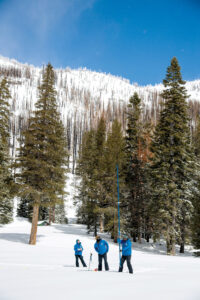
He also noted that bacterial canker could follow as well. But, the biggest concern is the lack of pollination due to the cold, wet weather. “The bees stayed in their hives during the storms, which were during full bloom, and I believe our crop will be down mostly because of a lack of pollination and fruit set,” Holtz detailed.









